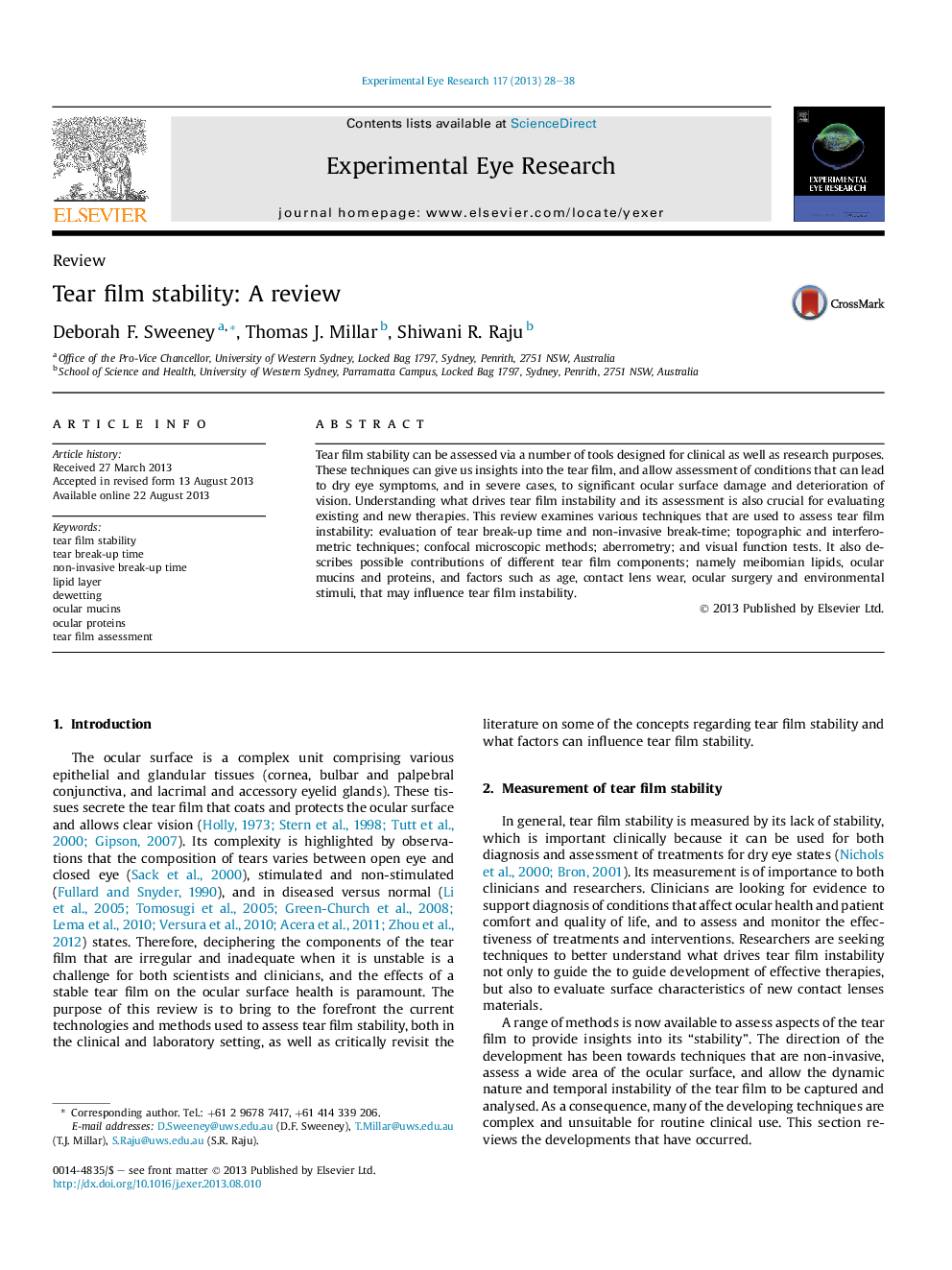| Article ID | Journal | Published Year | Pages | File Type |
|---|---|---|---|---|
| 4011176 | Experimental Eye Research | 2013 | 11 Pages |
•Clinical and research methods to assess tear film stability.•Role of meibomian lipid, and ocular mucins and proteins in tear film stability.•Influence of age, gender, contact lens wear, ocular surgery and environment.
Tear film stability can be assessed via a number of tools designed for clinical as well as research purposes. These techniques can give us insights into the tear film, and allow assessment of conditions that can lead to dry eye symptoms, and in severe cases, to significant ocular surface damage and deterioration of vision. Understanding what drives tear film instability and its assessment is also crucial for evaluating existing and new therapies. This review examines various techniques that are used to assess tear film instability: evaluation of tear break-up time and non-invasive break-time; topographic and interferometric techniques; confocal microscopic methods; aberrometry; and visual function tests. It also describes possible contributions of different tear film components; namely meibomian lipids, ocular mucins and proteins, and factors such as age, contact lens wear, ocular surgery and environmental stimuli, that may influence tear film instability.
